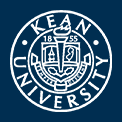Files
Download Full Text (4.2 MB)
Description
William Stephens wrote to an unknown person, unaddressed. Stephens wrote about rice being shipped by the sloop Friendship. He suggested the rice be sold in New York because of the scarcity of money in Savannah. Three companies of troops from New York left for St. Mary's, Georgia to the relief of settlers there, but the governor felt that such was unnecessary because "the Indians, are so peaceably welcomed." People included: Capt. Barnham, governor [of Georgia], President of the United States. Places included: New York, St. Mary's, GA.
Author/Creator
William Stephens (1752-1819)
Creation Date
5-10-1790
Document Type
Manuscript
Location
Savannah, Georgia
Inventory Location
Series 5; 103 C
Recommended Citation
Stephens, William. William Stephens to Unknown Person, May 10, 1790. Manuscript. From Special Collections Research Library and Archive, Kean University, Liberty Hall Collection 1790s. https://digitalcommons.kean.edu/lhc_1790s/424
Rights
This collection is open to the public for research use. Copyright remains with Kean University. Credit this material. Personal photographs may be made for research purposes. Inquiries regarding publishing material from the collection should be directed to the Special Collections Research Library and Archive at keanscrla@kean.edu.
Publishing Repository
Special Collections Research Library and Archive, Kean University





Collection
Liberty Hall Collection, 1711-1847 (bulk 1790-1830)